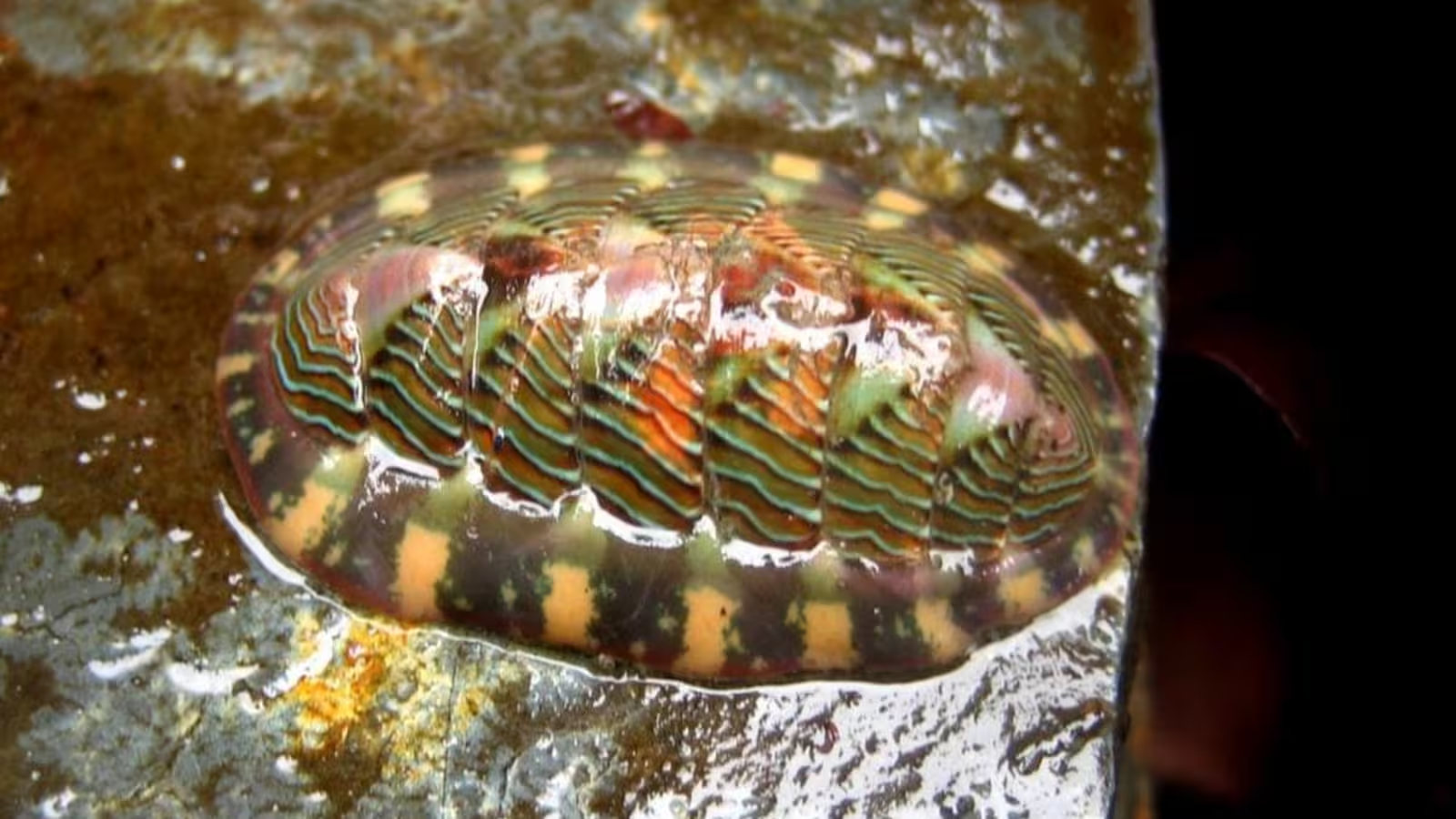4 Minutes
Introduction and scientific background
Chitons are small, flattened marine mollusks often overlooked on rocky shorelines. Turn one over and you find an unexpected feature: rows of extremely hard, polished teeth that the animal uses to scrape algae and detritus from rock. A study published August 7 in Science dissects how these teeth achieve mechanical properties comparable to, and in some metrics surpassing, engineered cutting and wear-resistant materials. The work links molecular biology, mineral chemistry and nanoscale structure to explain a biological process with direct relevance to materials science and sustainable manufacturing.
Mechanism: proteins, magnetite and controlled iron delivery
Researchers traced a chiton-specific protein called RTMP1 through the animal’s tooth-forming tissues and demonstrated how it orchestrates iron deposition. RTMP1 travels through nanoscopic channels that lead from the soft tissue to each tooth surface, where it binds to molecular components that template the formation of magnetite (Fe3O4), an iron oxide responsible for much of the teeth’s hardness. Simultaneously, RTMP1 appears to mobilize iron held in ferritin, the intracellular iron-storage protein, releasing that iron where and when magnetite formation is needed. The coordinated timing and spatial control—biomineralization at room temperature with nanoscale precision—produce rows of ultrahard teeth that are also regularly renewed as wear accumulates.
Key terms explained
- Biomineralization: the process by which organisms produce mineralized structures under biological control.
- Magnetite: an iron oxide mineral (Fe3O4) with magnetic properties and high hardness in certain nanostructured forms.
- Ferritin: a protein complex that stores iron inside cells and releases it in a regulated fashion.
Methods and field sampling
The team combined materials‑science imaging (high-resolution microscopy and spectroscopy) with molecular biology to map RTMP1’s path and activity. Specimens came from larger chiton species collected along the northwest coast of the United States and the shores of Hokkaido, Japan. By integrating structural characterization with biochemical assays, the researchers reconstructed the sequence of protein transport, iron release and mineral templating that yields tooth formation. This multidisciplinary approach allowed the authors to move beyond observing material properties to revealing the assembly program that builds them.
Implications for materials science and technology
Paper co-author David Kisailus emphasized the translational potential: “We can learn a lot from these biological designs and processes.” The natural process produces extreme hardness and wear resistance at ambient temperatures and without energy‑intensive smelting or toxic reagents. Translating the chiton strategy could inform spatially and temporally controlled synthesis of engineered materials—examples include battery electrodes, fuel‑cell catalysts, semiconductors, and wear‑resistant coatings. The precise biological control over nanoscale mineral architecture also suggests new paradigms for additive manufacturing (3D printing) and greener synthesis methods that reduce energy use and hazardous byproducts compared with many current industrial processes.
Expert perspective and future directions
The discovery of RTMP1 as a dedicated iron‑binding and magnetite‑templating protein opens several research avenues: identifying the minimal peptide motifs that nucleate magnetite, reproducing channel‑mediated delivery systems in synthetic scaffolds, and engineering ferritin‑based iron reservoirs for controlled release. If researchers can mimic the chiton’s “itinerary” for iron and protein traffic, it may be possible to manufacture complex, hierarchical materials with tailored properties without the need for extreme temperatures.
Conclusion
Chiton teeth are more than a biological curiosity: they are a living example of room‑temperature, nanoscale manufacturing that yields exceptional mechanical performance. By revealing the molecular actors (RTMP1, ferritin) and structural steps that produce magnetite‑reinforced teeth, the recent study provides a concrete blueprint for bioinspired materials research. Advances based on these principles could enable more sustainable fabrication of hard, wear‑resistant materials for industrial cutting, medical implants, energy devices and beyond.
Source: science


Leave a Comment